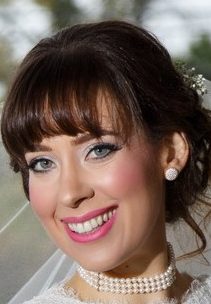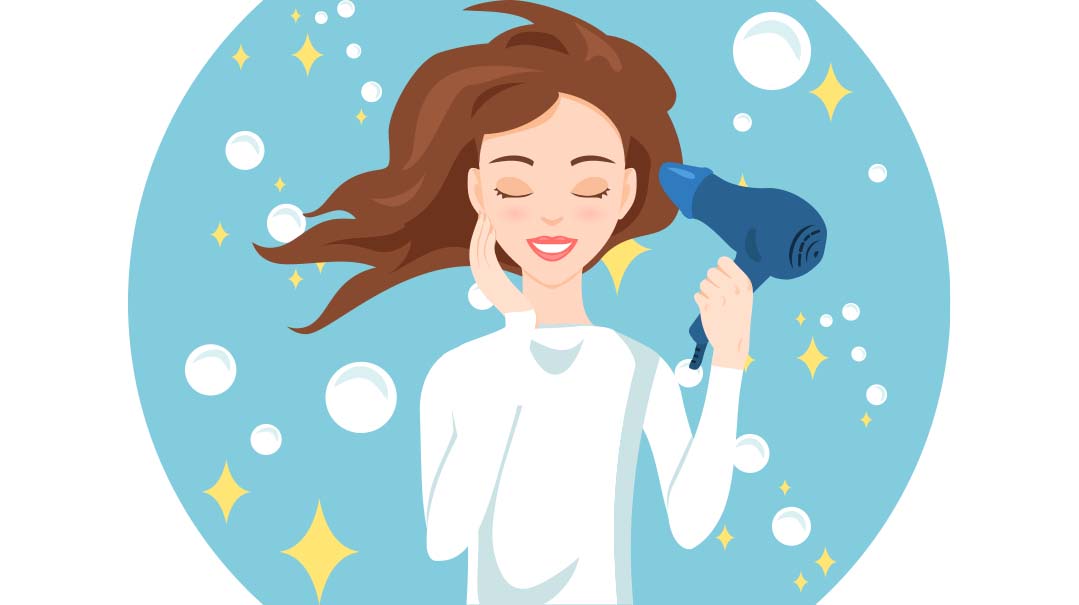Let’s Get Into Your Hair

The Beauty Aficionado tackles all things hair

As someone who dated for a decade, I’ve experimented with many forms of hair torture — blow dryers, straightening irons, and hot air brushes, to name a few. Add to that the visits to the salon in the event of an occasion, when the stylist would aim the dryer straight at my scalp while I writhed in agony.
I was therefore mindful to mitigate the damage as much as possible. I let my hair air-dry unless it was absolutely necessary to style. I analyzed products that would provide the right level of conditioning — not too much, not too little. I applied coconut oil hair masks on a weekly basis, which would require two shampoos, minimum, to wash out. If I recall correctly, I even popped biotin supplements at some point.
Like skin, there are numerous hair types; like skin, it can be dry or oily. There are other categories too: thin vs. thick, straight vs. wavy vs. curly. Prone to frizz? Battling dandruff? Thinning hair?
The list of hair concerns can be daunting, especially as there’s no one answer when it comes to hair care. So, like with skin care, try to figure out what sort of hair you have so you can assign products and methods accordingly.
Shampoo
In recent years, daily shampooing has taken a bit of an image hit. If hair is prone to dryness, shampooing often strips the hair of nourishing oils. If hair is oily, while it does need more shampooing than dry hair, shampooing too much can also make the scalp over-produce oil.
Therefore, shampoo according to your hair’s needs. Maybe it’s every other day, maybe every three days. With oily hair, there might be an adjustment period until the oil calms down, so bear with it.
When shampooing, focus on the scalp and roots, not on the ends of hair. Additionally, water should not be hot, but rather lukewarm. Hot water isn’t good for hair or skin.
Be sure to get a shampoo that works for your hair type. Dry hair? Look for labels that tout “nourishing,” “hydrating,” and “smoothing.” Oily hair? “Clarifying” and “purifying” is up your alley. Fine hair? Seek out “volumizing,” “thickening,” and “biotin.” Do you dye your hair? Go for “color protect” or “color care.”
If you want to stretch the time between shampoos, either due to extending a style or a three-day Yom Tov, try a dry shampoo. These are powders that absorb excess oil. I’ve actually used cornstarch in a pinch (a dusting, only!), and it worked quite well.
Conditioning
When shampooing, conditioner is always next. Don’t apply conditioner to the scalp, but to the ends. The scalp produces oil, so conditioning up there makes hair look limp. It’s the ends of the hair that need some love. Before applying conditioner, squeeze out water from hair first. After applying, let it sit for a few minutes before rinsing out. To be sure of even distribution, use a wide-tooth comb. Use as much product as needed; longer hair will need more, short hair less. Rinse thoroughly.
As with shampoo, select a conditioner that understands your hair type, and every once in a while, apply a deep conditioner or mask for further nourishment.
If your hair is thick and prone to frizz, consider a leave-in conditioner following the shower. If doing any heat styling, this will also help prevent damage. Press out (don’t rub) excess water from hair, apply the leave-in conditioner (as much as the label says), and comb or brush it through.
Scalp Exfoliants / Scrubs
From time to time, it’s good to clean out buildup. Enter scalp exfoliants or scrubs.
As with skincare, there are physical and chemical options. Physical exfoliants require friction to get the job done, so they have to be massaged in (they usually have “scrub” on the label). Chemical exfoliants have acids that do the work without the labor.
But use these scrubs strategically, as overuse can harm the hair follicle. The goal is to be thorough, yet gentle.
Another option is a scalp massager, which I often use while I shampoo. I like how it works the product in to help cleanse my scalp. Additionally, scalp massage can stimulate hair growth. This can also be done with finger tips, but the fleshy pads, not the nails. (Scalp massage can also be done when hair is dry, a few minutes a day to promote hair growth.)
If exfoliating, that’s the first on the to-do list when entering the shower.
Towel
Yes, you’ll need a different sort of towel for wet hair. The standard cotton towels are no friend to hair. Not only do hair towels absorb water better than the usual bath towel, they’re kind to hair and reduce frizz. Regular towels can exacerbate damage.
If you don’t have a hair-specific towel, don’t rub your hair with a bath towel. Press hair against it instead.
Brush
Pretty much everyone is smitten with the Wet Brush (including me). When hair is wet, it’s more vulnerable to damage than when dry, so easy does it. Wait a bit, if possible, before brushing, until hair is damp as opposed to dripping.
The Wet Brush’s bristles tenderly comb through hair, bending when they reach an impediment instead of yanking through. A wide-tooth comb is also a good option for this. Start carefully from the bottom and work up.
Some hair types, like curly hair, don’t like being brushed at all, especially when dry, and respond better to a finger- or wide-tooth combing in the shower.
When hair is dry, boar bristle brushes are recommended as they redistribute oils from the scalp to the rest of the hair. But in general, brush only when necessary. That “100 strokes a day” thing was debunked eons ago as a hair-killer.
Styling
In my personal opinion, I think we should all embrace our hair type. It saddens me when vibrant, bouncy curls are flattened into oblivion, or when the straight-haired struggle to induce curl (remember perms? Shudder). I can understand an occasional desire to see how the other half lives, but the grass isn’t greener, people. Work with the hair you were given, not against it.
If hot styling tools are going to be wielded, apply a heat protectant. Keep the tool on the lowest heat setting possible (my blow dryer, happily, has a “warm” setting). Also, try to keep the heat on the ends of hair for as short a time as possible, lest the ends split.
When using a blow dryer, not all types are created equal. Ceramic (or porcelain) and titanium dryers both distribute heat evenly, but titanium dryers get hotter than ceramic or porcelain, which means more damage. Ionic dryers are best for those with frizzy hair. Look for adjustable heat settings (lower heat options are good), and a cool or cold button that will seal in style and shine.
Hair doesn’t have to be simchah ready all the time, especially if it’s going to damage your crowning glory. Air-dry as much as possible, using mousses or serums to smooth and define.
Frizz
Frizz isn’t only the bane of curls (believe me). If hair isn’t moisturized enough, and is then exposed to humidity, enter the poof. Curlier hair is prone to frizz because the natural oils have difficulty making its way down the hair shaft.
Harsh chemicals strip oil from hair, so to treat frizz, take it easy on the hard stuff. Try avoiding products with sulfates or dyes with ammonia. As mentioned prior, washing with hot water, too much shampooing, too much heat, too much friction with the wrong towel, and brushing with the wrong brush can all aggravate hair and lead to frizz.
If frizz tends to be at the ends of hair, frequent trims (every six to eight weeks) can help with that. If heat styling, ionic blow dryers that emit negative ions are a better choice (if your hair isn’t dry and frizzy, however; negative ions will make your hair flat).
Sleeping
A silk or satin pillowcase is kinder to hair than typical linen. It also helps products stay in and not get rubbed off overnight and ensures hair won’t crease.
Silk scrunchies are also an option. I try to be conscious where my hair tie is — I don’t want it to be in the same place every night, damaging one area. Sometimes I sleep with my hair loose.
Trims
Hair is pretty much dead proteins, and at some point, the ends have got to go. Regular trims maintain overall hair health. I’ve learned during Covid that I can wield scissors myself if desperate.
Dandruff
I’ve been wrestling with flakes myself, and sadly, dandruff isn’t a curable condition, merely treatable. There isn’t only one cause of dandruff. It could stem from a harmless yeast living comfortably on the scalp, or dermatitis, or dry skin, or an allergic reaction to a product, or using a shampoo that isn’t strong enough to cut through scalp oil.
Scalp exfoliants may not be the best option here, but rather medicated shampoos. If it’s still impossible to control, seek out your friendly local dermatologist.
Locale
I’ve heard that seminary girls can suddenly experience hair difficulties, like thinning, during their time in Israel. One theory is that Israeli water and American products aren’t a good match. Try using Israeli products instead that are formulated for the climate.
Thinning
Hair thinning can be an inevitability of life. We lose 50 to 100 hairs a day; we don’t always regrow them. Genetics, hormones, and age can all contribute. As can stress; trauma can cause hair to thin, even a few months after the event. However, as the stress passes, hair should regrow. During pregnancy, hair is usually especially thick, but then, several months postpartum, there’s often excessive shedding. Here, too, the situation will eventually stabilize.
Thinning hair can be treated with topical creams (like Minoxidil, a.k.a. Rogaine) or oral medications (like spironolactone or finasteride, which have potential side effects). There’s also some hopeful chatter about natural remedies, like supplements and essential oils. These methods, however, have little data to back them up, but can still be worth a try.
Gentle daily scalp massage may also help to stimulate hair follicles.
If hair is thinning, don’t demand too much of it. Hold off on heat styling or chemical treatments, and don’t brush when hair is wet.
Hair loss can also occur from other health concerns, like thyroid and digestive conditions. Nutrient deficiency is another possibility, like vitamin D or iron. If hair loss is extreme, off to the doctor you go.
Covering
For those who are now in the hair covering stage of life (as I am now) there are different issues to tackle. In my case, my own hair began to prefer less conditioning than I applied prior.
Thankfully, there are now alternatives to the combs and clips that sheitels used to require; velvet wig grips are a much gentler alternative. Repetitive placement of pins and clips in one area can cause damage, so rotate if possible. I also try to massage my scalp here and there with my fingertips.
Diet
“You are what you eat” is also true for hair! A balanced, nutrient-dense diet isn’t only good for overall health, the results can be seen in skin and hair. You know the drill: fruits, vegetables, nuts, seeds, proteins (like eggs, fish, and Greek yogurt), whole grains, and legumes. Malnutrition and yo-yo dieting can cause hair loss, so diet should be nutritionally delicious.
In Conclusion
Be kind to your hair, no matter how tempting it may be to put it in its place with chemicals or heat. Bottom line: healthy hair = beautiful hair.
(Originally featured in Family First, Issue 772)
Oops! We could not locate your form.






